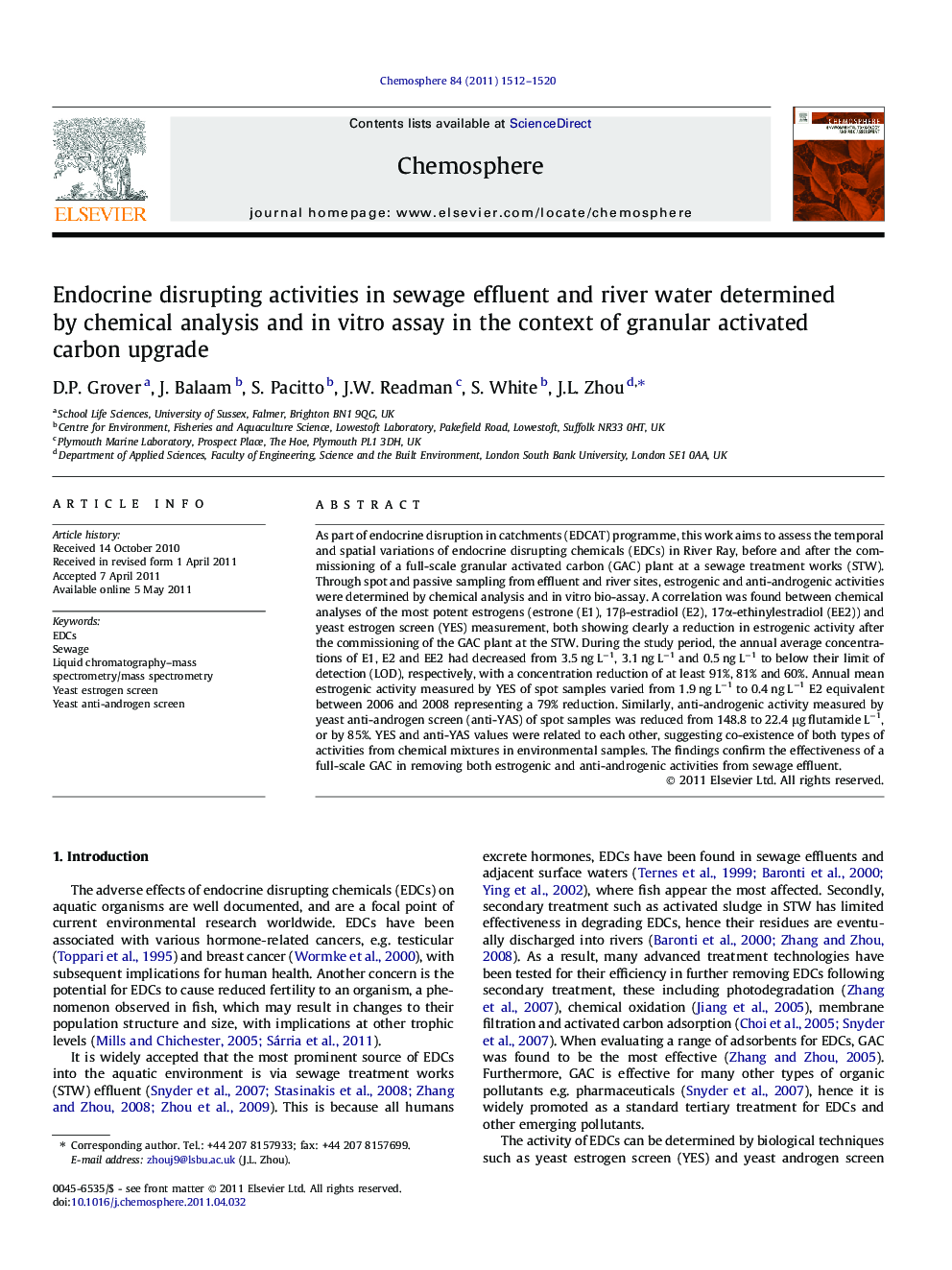| کد مقاله | کد نشریه | سال انتشار | مقاله انگلیسی | نسخه تمام متن |
|---|---|---|---|---|
| 4410785 | 1307563 | 2011 | 9 صفحه PDF | دانلود رایگان |

As part of endocrine disruption in catchments (EDCAT) programme, this work aims to assess the temporal and spatial variations of endocrine disrupting chemicals (EDCs) in River Ray, before and after the commissioning of a full-scale granular activated carbon (GAC) plant at a sewage treatment works (STW). Through spot and passive sampling from effluent and river sites, estrogenic and anti-androgenic activities were determined by chemical analysis and in vitro bio-assay. A correlation was found between chemical analyses of the most potent estrogens (estrone (E1), 17β-estradiol (E2), 17α-ethinylestradiol (EE2)) and yeast estrogen screen (YES) measurement, both showing clearly a reduction in estrogenic activity after the commissioning of the GAC plant at the STW. During the study period, the annual average concentrations of E1, E2 and EE2 had decreased from 3.5 ng L−1, 3.1 ng L−1 and 0.5 ng L−1 to below their limit of detection (LOD), respectively, with a concentration reduction of at least 91%, 81% and 60%. Annual mean estrogenic activity measured by YES of spot samples varied from 1.9 ng L−1 to 0.4 ng L−1 E2 equivalent between 2006 and 2008 representing a 79% reduction. Similarly, anti-androgenic activity measured by yeast anti-androgen screen (anti-YAS) of spot samples was reduced from 148.8 to 22.4 μg flutamide L−1, or by 85%. YES and anti-YAS values were related to each other, suggesting co-existence of both types of activities from chemical mixtures in environmental samples. The findings confirm the effectiveness of a full-scale GAC in removing both estrogenic and anti-androgenic activities from sewage effluent.
► Chemical analysis and in vitro bio-assay were used to assess endocrine disrupting activities.
► Both estrogenic and anti-androgenic activities were reduced since GAC upgrade.
► EEQ values from chemical analysis and YES are related.
► YES and anti-YAS values are related to each other.
Journal: Chemosphere - Volume 84, Issue 10, September 2011, Pages 1512–1520